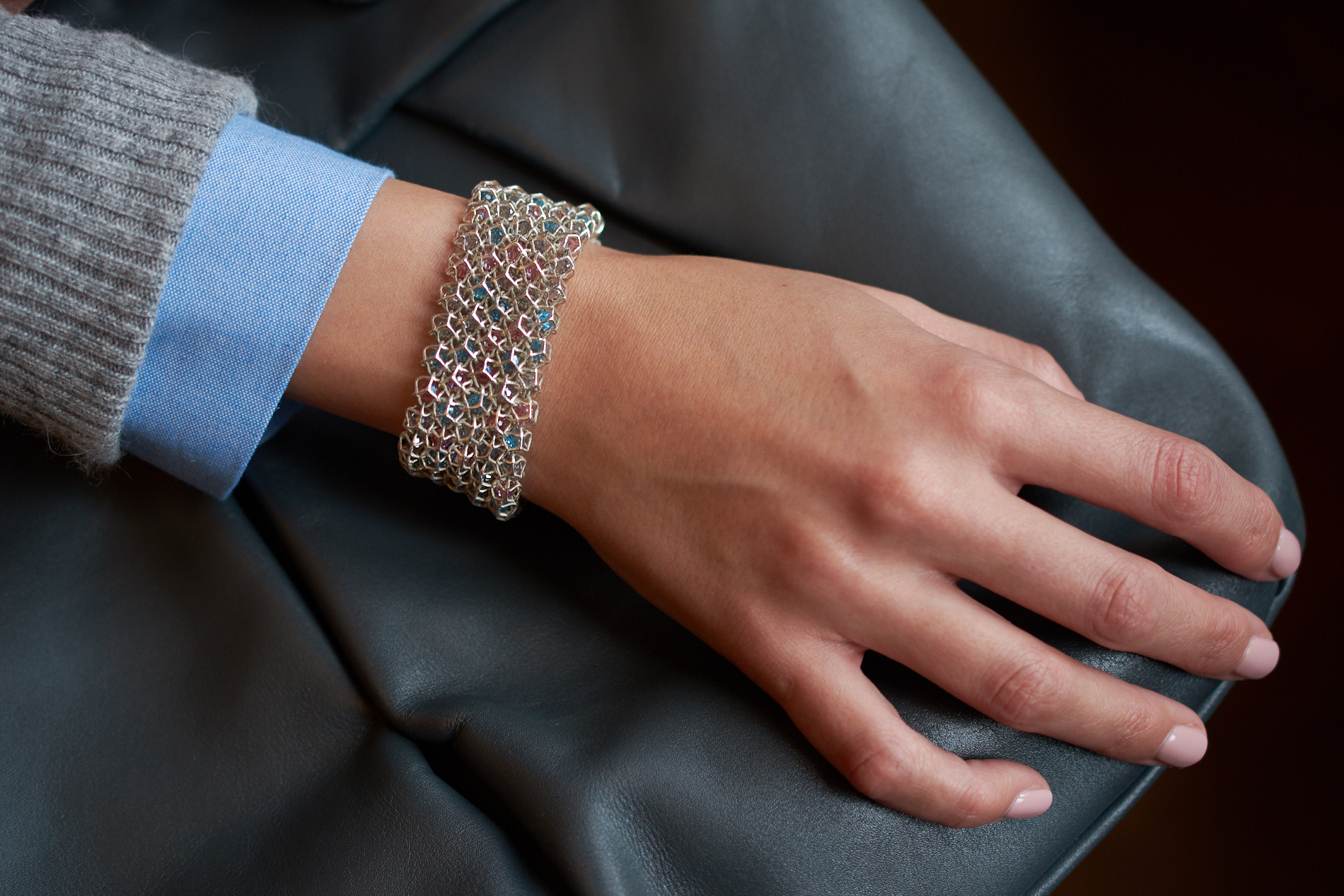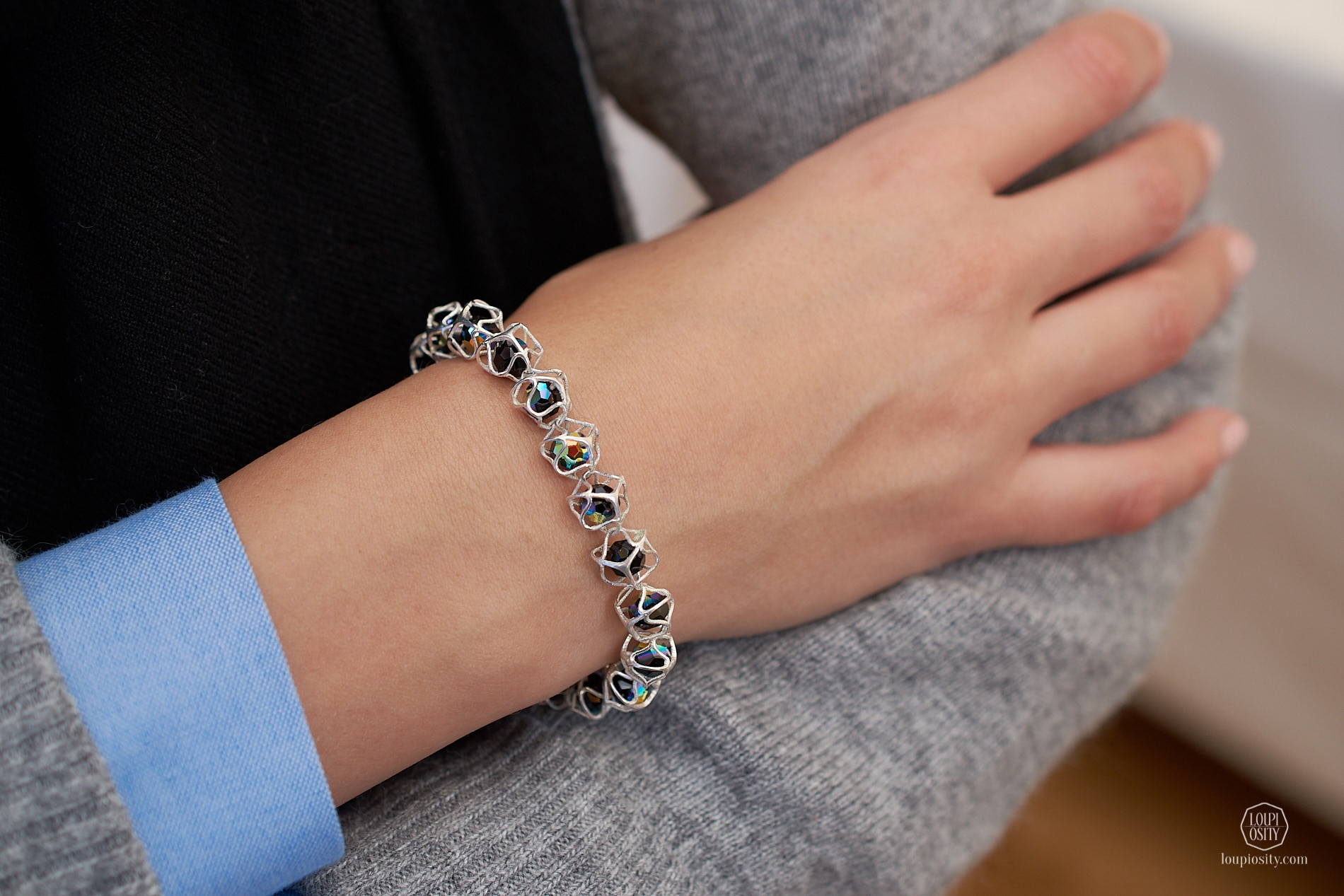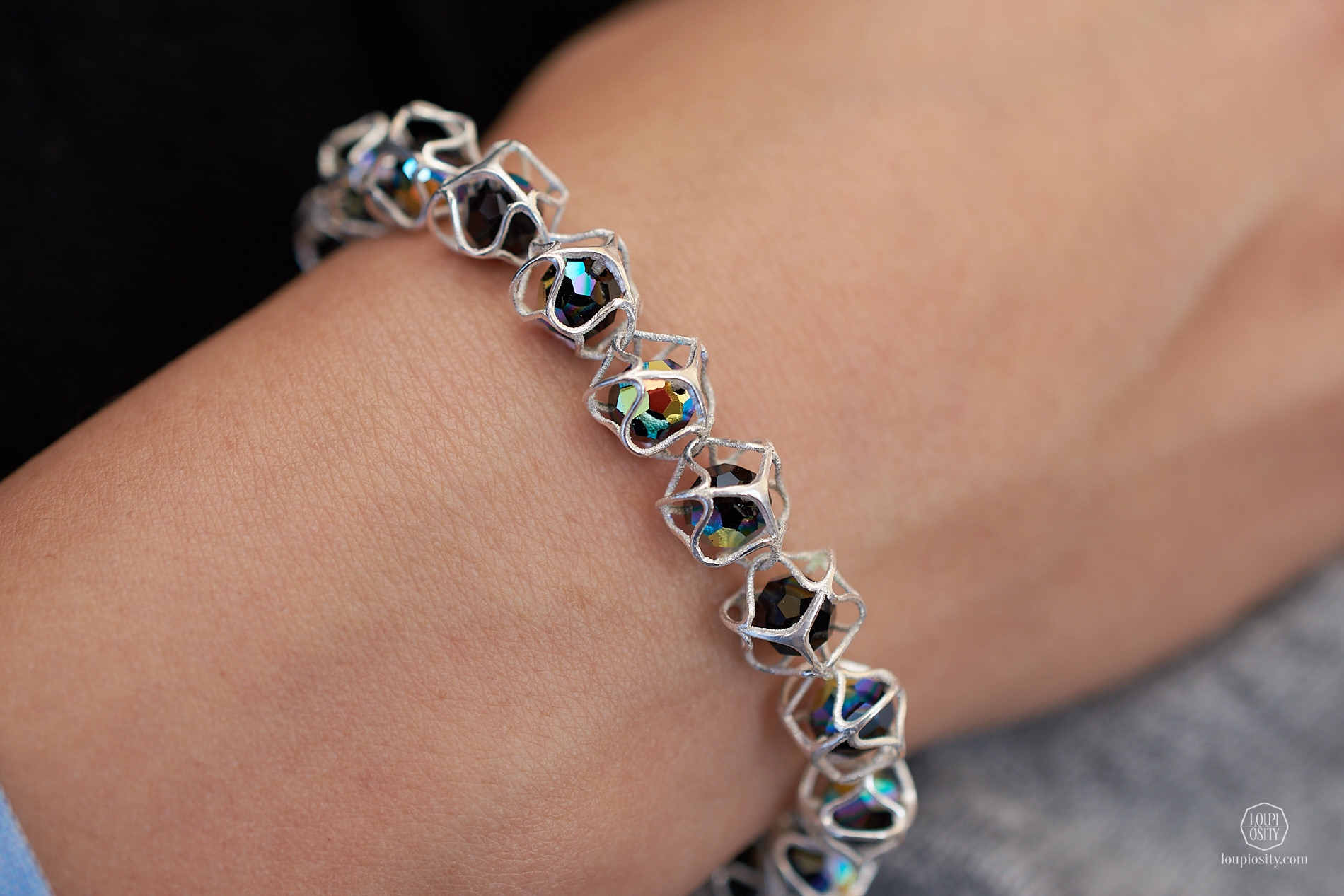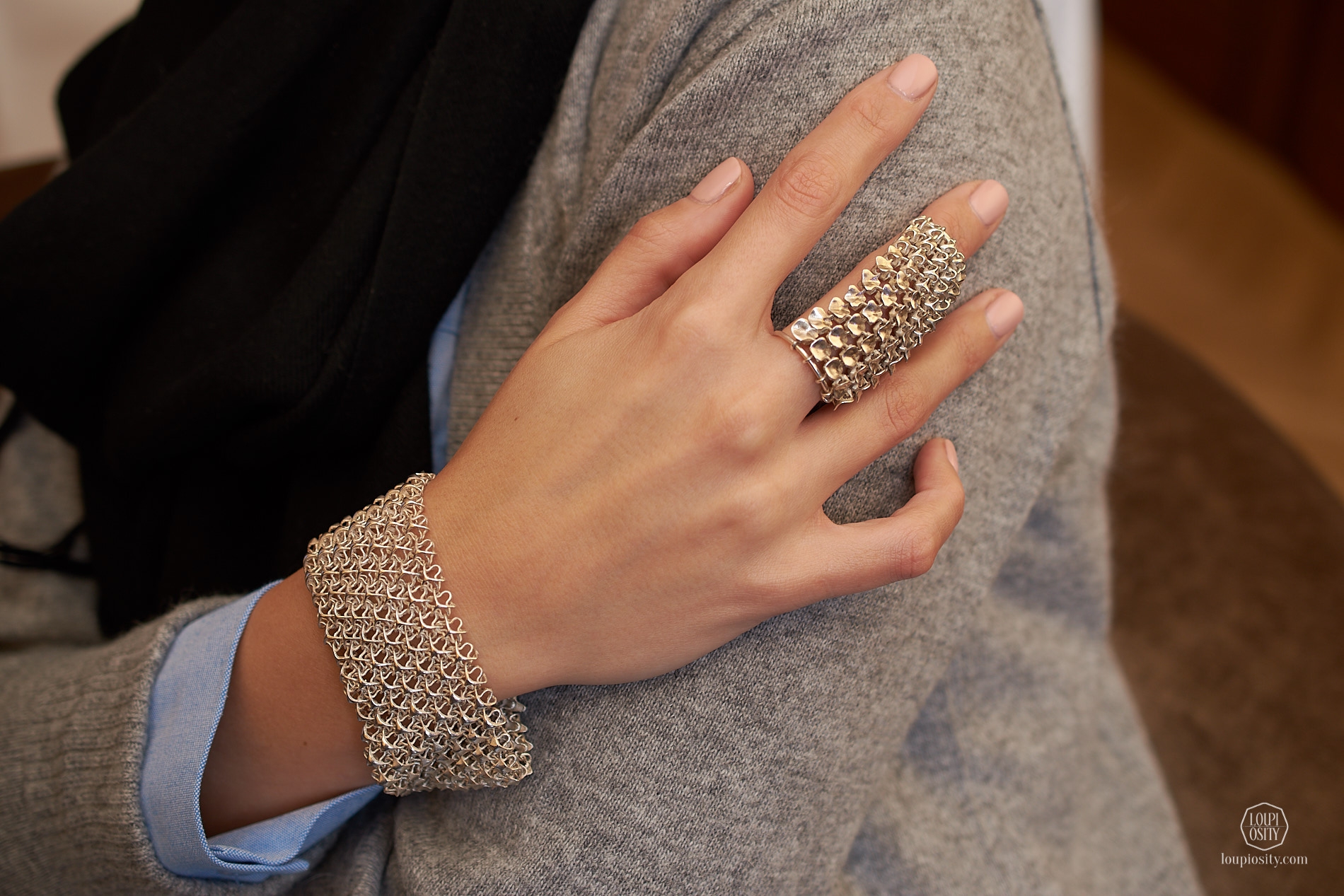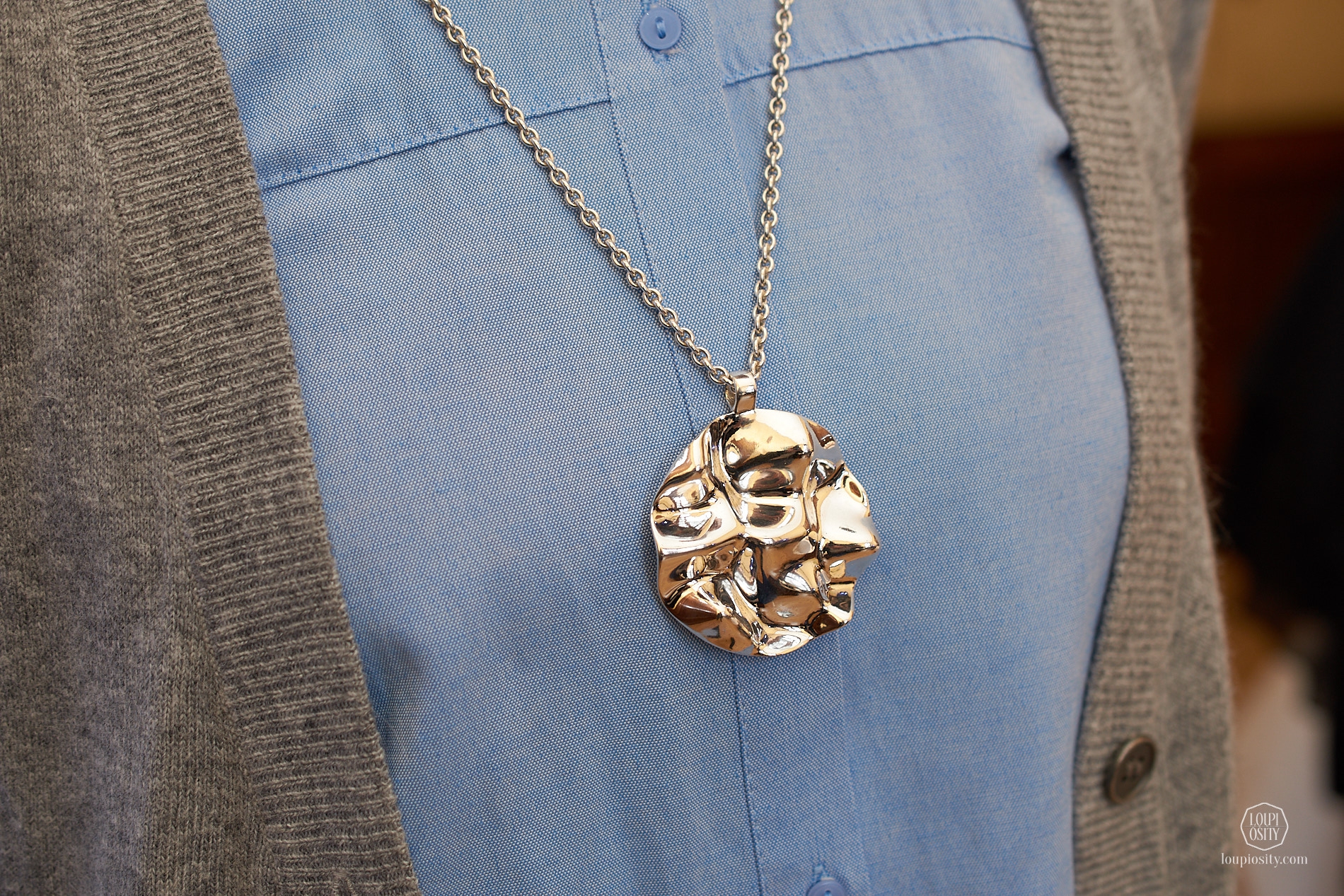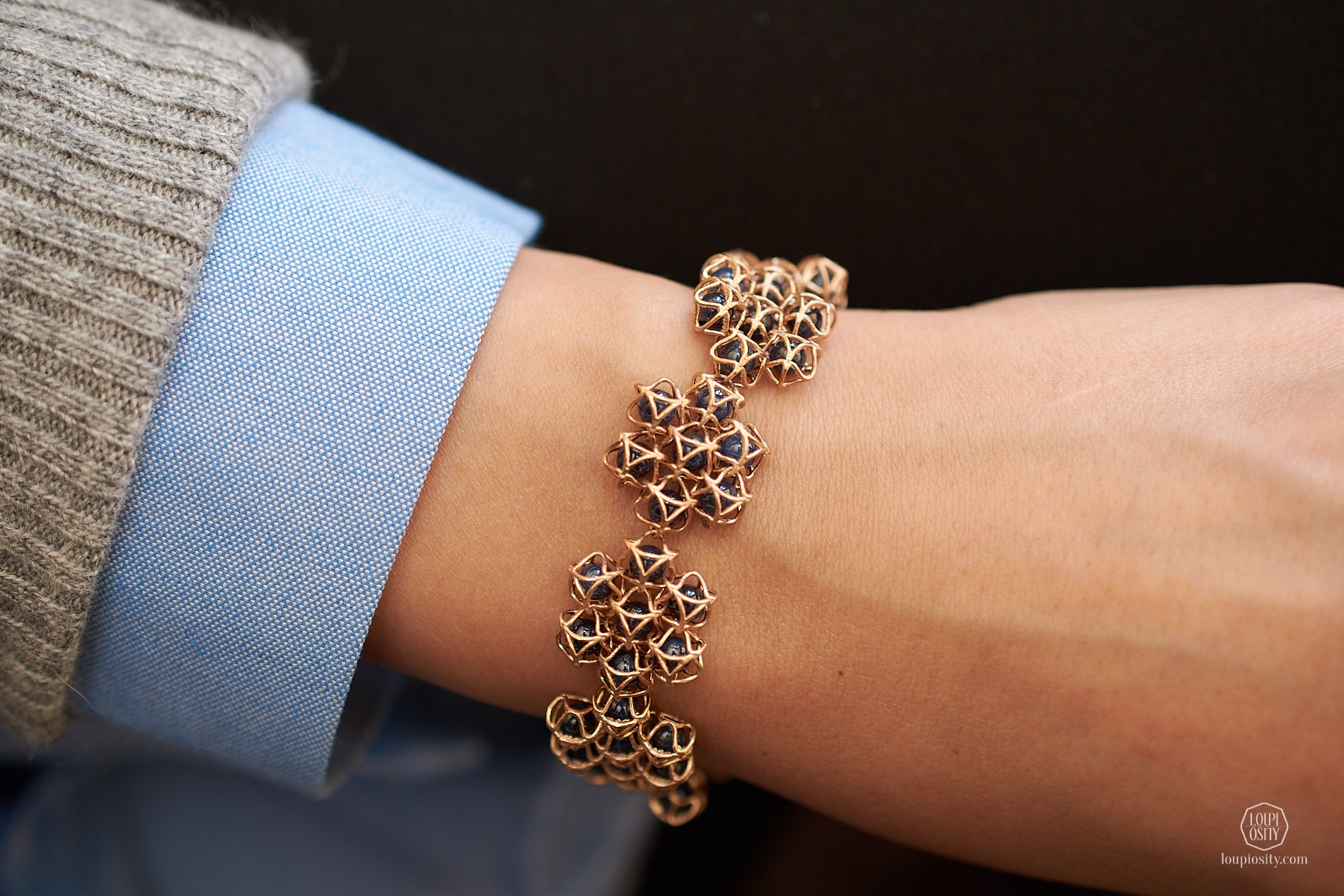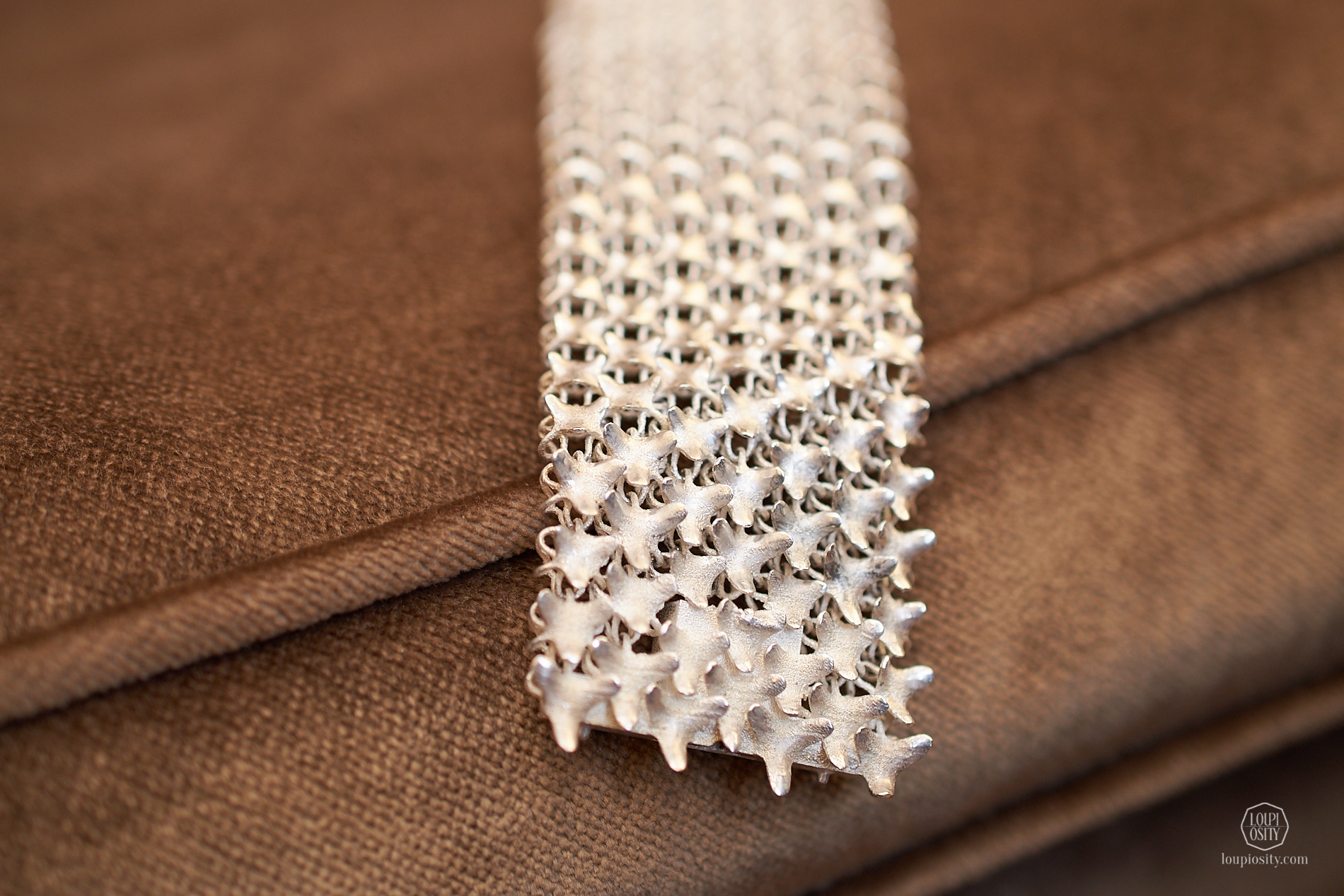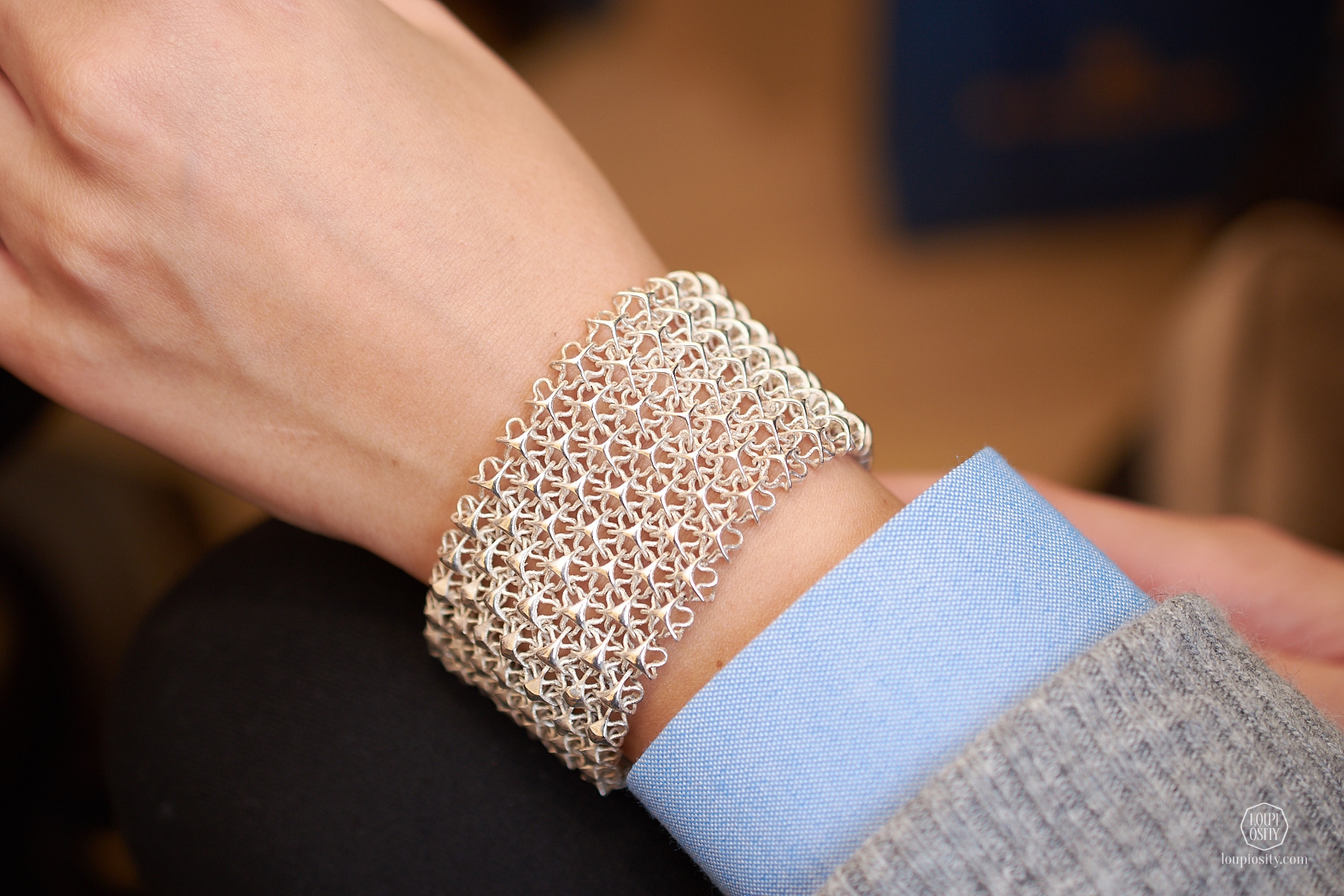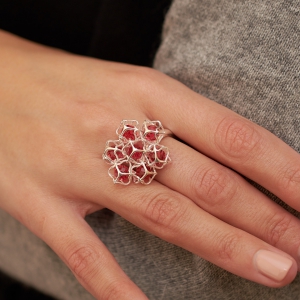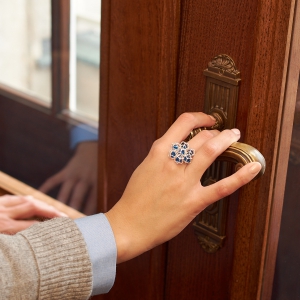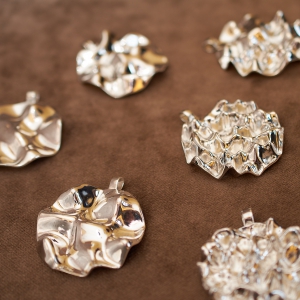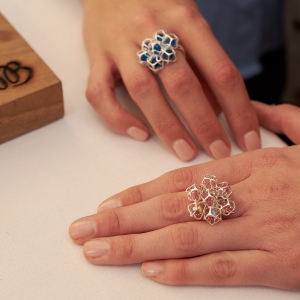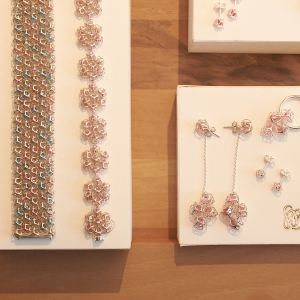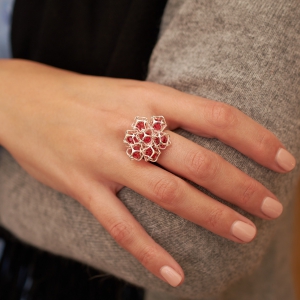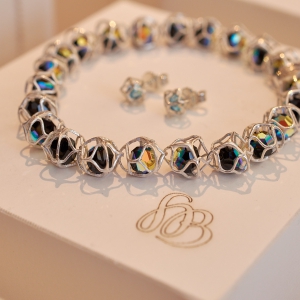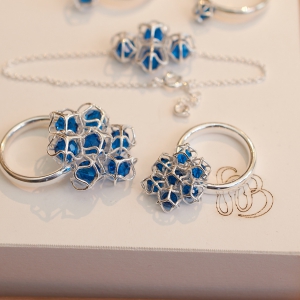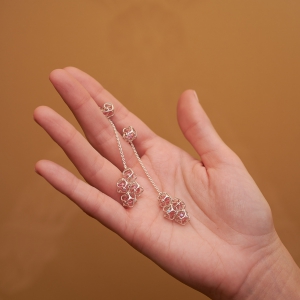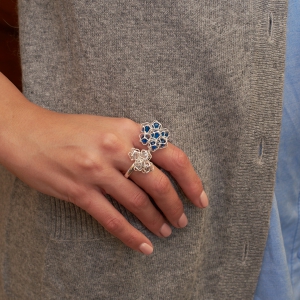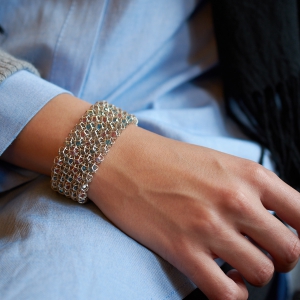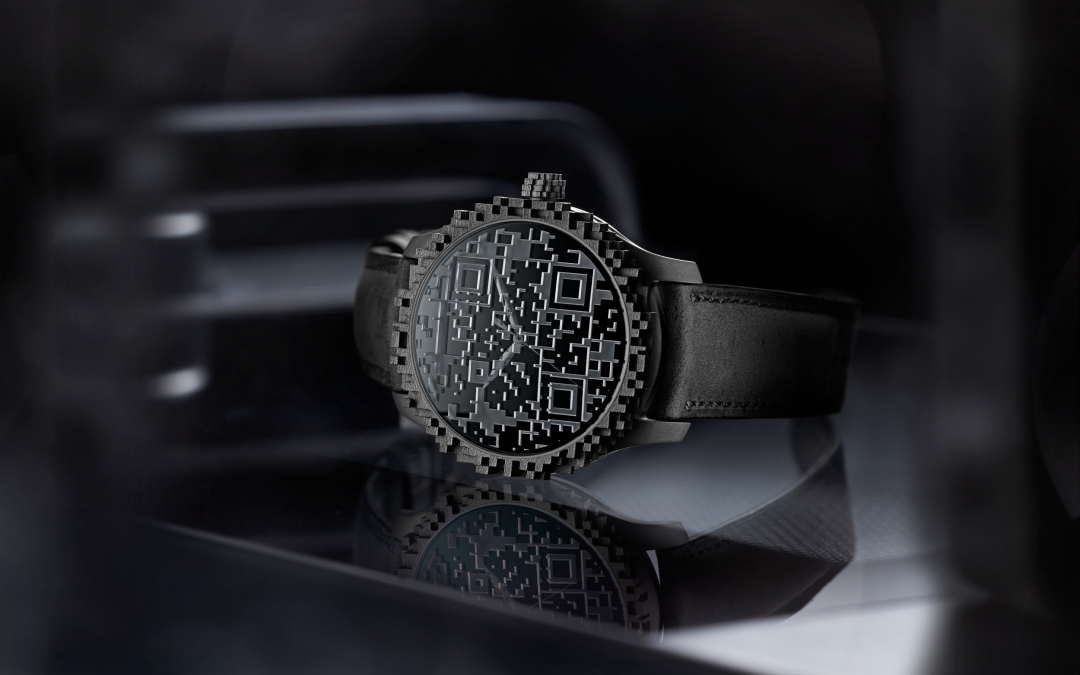We met a young architect recently, who took the realm of the family jewellery business and sailed on new waters. BOLTENSTERN, the celebrated jeweller of the 70s and 80s from Vienna, is today a pioneer in CAD design and 3D printed precious metal jewellery. Marie Boltenstern gave us an insight to design and technology at her pop-up store in the Park Hyatt Vienna.
I guess the following topic is just as controversial as exciting. For the 01110101000101 generation technology is natural like walking. Introducing something new became the norm, while not being disruptive risks being boring. The traditional industries are having a tough time defining their image in such a fast changing world, where a 2 year-old company might seem mature – and they have 150+ years in their hands. A balance must be found between artistry, craftsmanship, traditional methods and profitability and therefore new knowledge and machinery, such as CNCs have finally made their way even into the proudly historic companies.
Cutting out material in a way the finest hands couldn’t accomplish (or at least not at that speed) is what most CNCs do. But what if we could build the material in exactly such a delicate manner? So precisely that we could achieve extreme structures that milling and moulding would not allow.
To tell the truth I lagged behind in thinking, assuming that 3D printing is just to create crazy toys from wax and plastic. Or for mock-ups and prototypes for industrial use at the maximum. I was therefore eyes and ears wide open listening to Marie Boltenstern talking about her 3D printed precious metal jewellery at a start-up event in Vienna.
The topic has buzzed me so much that I visited her for a chat before she opened her pop-up salon at Park Hyatt Vienna. We spoke about the manufacturing process as well as her aspirations as a jewellery maker and how her father’s traditional BOLTENSTERN clients reacted to her 3D printed designs.
BOLTENSTERN
Marie’s father Sven Boltenstern founded the family business in 1964. He and his pieces were popular among the jet-set in Austria, France, Switzerland, Germany, London, UAE and USA around the 70s and 80s. (Check out a few of his jewels here.)
Marie was raised in this milieu, but she decided to follow the footsteps of her grandfather – Erich Boltenstern, who was a leading architect during the reconstruction of Vienna post-WWII. She completed her studies in architecture in Vienna and a Master of Science in Architecture in Berlin. Being a millennial she continued in a very contemporary direction and finished a Masters in Emergent Technologies at the Architectural Association in London. She specialised in computer-based parametric design and fell in love with the 3D printing techniques.
Marie had been designing structures with CAD software at architecture companies when she met a firm expert in direct precious metal 3D printing. That created new ambitions and in 2015 she took the management of the family business and sailed onto new waters with 3D printed jewellery.
It was a big shift for everyone familiar with BOLTENSTERN. But before we discuss how Marie sees this side of the world and what drives her, let’s stop for a second and talk about how objects can be actually printed from precious metals.
What? Printing platinum?
3D printing is when you build something from a base material stored in a cartridge in powder form for example, thus it’s also called additive manufacturing. The shape is designed with CAD (Computer Added Design) software and the printing process is also controlled by a computer.
A huge advantage of 3D printing as opposed to CNC milling is that it produces much less waste and requires less energy. Another characteristic that they share is that both technologies allow small production numbers. For all these reasons, 3D printing has been used in industries like medicine for creating personalised prosthetics from titanium for patients.
Talking about titanium, the materials can be quite diverse from plastic to various plastic+metal composites and pure metal too. Working with metals requires higher temperatures; therefore this is still not something you’d do at home (for those you have the plastic+metal powder mixes, which can be printed at lower temperatures).
Objects from platinum, the most precious metal found on Earth can also be 3D printed. Just like gold and sterling silver. Funny enough the order of processing hardness is the other way around: printing silver happens at the highest temperature, gold is easier to work with, and platinum is the easiest of all.
The challenge with precious metal printing is the management of the metal powder in the 3D printing tool – more on that later.
Layer by layer
There are various printing techniques, developed since the early 1980s. As patents have expired, many became open source, which resulted in today’s commoditisation of the method.
As I said, designing is done in CAD software. For Marie this was not new as she worked with these as an architect. “I consider myself an architect and from many ways, I approach metal 3D printed jewellery as an architectural structure. Because we can print material wherever we want and leave out “holes” at other places, my designs must be solid and strong even if playing with spaces, gemstone inclusions and lights.”
At the conference mentioned above, Marie Boltenstern met with UK-based Cooksongold (part of the Heimerle + Meule Group since 2013) a company for jeweller supplies. Their portfolio includes an extensive range of base metals in various forms, such as powder. They are also among the few firms with in-house precious metal 3D printing capabilities. This encounter gave the idea to Marie Boltenstern, active in an architect office at that time, to commence her private project for 3D printed jewellery.
She started to design bracelets, earrings and necklaces with the eyes of an architect and got Cooksongold to print them from precious metals. Her experience in 3D printing naturally led her designs way out from the restrictions of the moulding techniques.
In fact, the printing process is quite amazing itself. It is called powder bed fusion and as the name suggest, a high-energy laser beam melts small, evenly distributed metallic particles. The beam is very tiny in diameter, and therefore the material fuses only where the light hits the powder. Once a layer is done, the work-piece sinks one step down and the next layer of powder is distributed on top of it. This powder management is the tricky part, as you want perfect distribution on all layers and no waste. The laser melts the required areas on the next layer, and it goes on and on. The beauty is that since the object is built up from one cross-section to the next, designers can leave out spaces for joints and the entire piece is born at once with moving parts. What’s more, with a new technique Marie worked out, other materials, such as gemstones can be entrapped in the structure being created.
Check out this pretty cool video by Cooksongold showing pieces in the process:
Finishing
In the video above you could easily spot that the surfaces of the final objects are quite rough. Therefore finishing is an important step that follows printing. It is done in Vienna at BOLTENSTERN’s workshops by craftspeople who have worked on the company’s traditional jewellery, as well.
Boltenstern á la Marie
So given is a tested technique, which works well and economically, especially when printing in small batches. As well as a millennial woman loving and living at the fusion of emerging technologies and architecture who was born into a jewellery family, by the way. The result is a rather exciting experiment, which brings people into the pop-up salon at the Park Hyatt Vienna and stops others at the shop windows in ski resorts all around Austria and Switzerland.
3D printing offers previously impossible designs to jewellery making, such as extremely hollowed structures or ultra-fine fabric-like textures with delicate and flexible joints. Of course, it also has other considerations too. Pieces are created at once, for instance this bracelet came out from the working chamber as it is: without finishing of course, but with all its tiny joints.
“My father thought it is interesting, but I guess the real turning point was when I exhibited at the Park Hyatt in 2016 for the first time. This is when he got convinced that 3D printing could be the next big thing to BOLTENSTERN.” – Marie explained. “My designs are perhaps different, because I see jewellery as architecture patterns that you can actually wear comfortably. This is of course to a whole new clientele. However, it was great to see his traditional buyers getting excited for some of my bracelets. We get customers from Vienna and Zurich, but in this winter season we installed windows and pop-up stores in the best ski hotels in the Alps. Purchasing in our online store is also ramping up from all over the world, especially Asia.”
No wonder, she has stunning designs and the pieces are extremely comfortable.
I have been trying to understand what to think about this. In an industry loud about craftsmanship, handmade and many times un-reproducible pieces, she prints whatever jewellery she dreams of in the same precious metal – or in other materials. And as many times she wants. …but it that a bad thing? Even the most respected workshops employ CNCs and BOLTENSTERN does her own designs as well as a very nice job in finishing the pieces. They even developed new methods for setting gemstones. In fact, many jewellery and watchmaking companies flirt with 3D printing – today they are still rather making wax moulds and not directly printing the metal, but that will come eventually, too. At the Baselworld exhibition in 2016, Graff Diamonds introduced the new Snowfall collection, where they utilised 3D printing. Officine Panerai too came out with a 150 pieces special edition in 2016. The case of the Panerai Lo Scienziato Luminor 1950 Tourbillon GMT Titanio was made of direct metal laser sintering (DMLS) – UPDATE (28.01.2018): Panerai presented an unlimited collection made with the same technique. Read more about it here.
I guess it is fair to say that this technology gives goose bumps and BOLTENSTERN is among the few gathering valuable experience with it. Just like a growing customer base.
UPDATE – July 2020
If you are interested in the backstory, the technique and the possible future of the ‘precious metal additive manufacturing’, please check out the 2020 summer edition of the Metal Additive Manufacturing magazine (a very detailed jewellery article from the page 107).
Photo credits: Loupiosity.com.
All registered trademarks are property of their respective owners.
All rights reserved.
